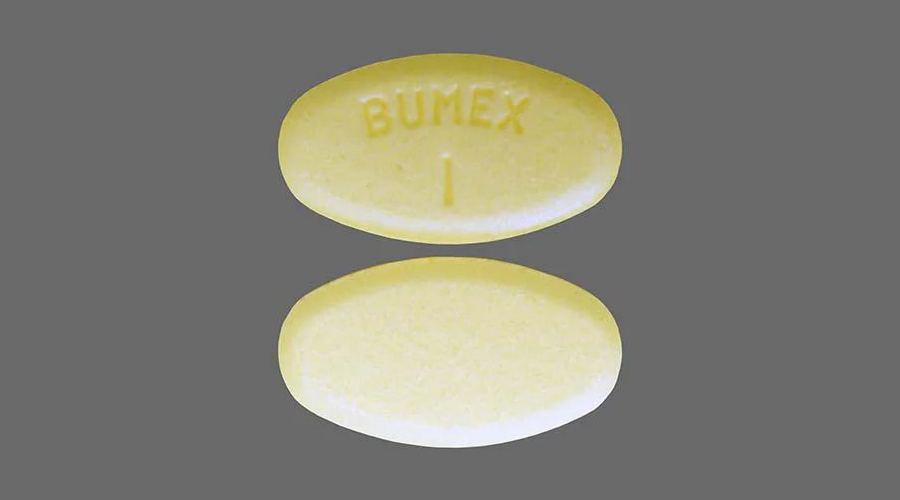One of the most common questions that arises for patients with congestive heart failure (CHF) is what medication to masteron take: bumex or lasix? There are many factors to consider when making this decision, including the patient’s individual medical history and current health condition.
Both bumex and lasix are diuretics that help the body get rid of excess fluid. They work in different ways, and so some people find that one works better for them than the other.
What are the main differences between Bumex and Lasix?
Bumex and Lasix are both diuretics that are used to treat high blood pressure, congestive heart failure, and other conditions. There are several key differences between these two drugs. Bumex is a more potent diuretic than Lasix. It is also more expensive. Bumex is usually given to people who have kidney problems, while Lasix is commonly used to prevent fluid overload in people who are receiving intravenous treatments.
Additionally, Lasix works by causing the kidneys to excrete more urine. Bumex is also a diuretic, but it works in a slightly different way. It inhibits the absorption of sodium and chloride ions in the intestine, which causes the body to retain less water. Because Bumex does not work as quickly as Lasix, it is often prescribed for people who are unable to tolerate the side effects of Lasix.
What is Lasix?

Lasix is a loop diuretic that doctors prescribe to treat fluid retention and high blood pressure. The drug inhibits the reabsorption of sodium and chloride ions in the renal tubules, which causes an increase in urine output. This also reduces the volume of blood circulating throughout the body, which helps lower blood pressure. Additionally, lasix can help rid the body of excess water and salt. Lasix may also be used to treat edema, or swelling.
Lasix is a loop diuretic made up of four basic ingredients- furosemide, lithium carbonate, benzalkonium chloride, and hydrochlorothiazide. Furosemide is the primary active ingredient and is responsible for most of the lasix’s effects. Lithium carbonate helps to prevent the development of tolerance to furosemide, while benzalkonium chloride and hydrochlorothiazide are effective in treating edema.
Lasix must be taken with food because the food will absorb some of the drug. Foods that are absorbed include dairy products, fruits and vegetables.
It is unclear whether lasix causes cancer in humans. Researchers have found that the drug can cause tumors and damage to ovaries and testes, but these findings are disputed. It is unclear whether lasix causes cancer in humans. Researchers have found that the drug can cause tumors and damage to ovaries and testes, but these findings are disputed. On the other hand, many studies have concluded that taking Lasix significantly increases the risk of bone fracture.
How does Lasix work?
Furosemide, sold under the brand name Lasix among others, is a medication used to treat fluid build-up due to heart failure, liver scarring, or kidney disease. It is given intravenously or orally. When taken by mouth it is about 50% absorbed. The rest is excreted in the urine. When given intravenously the effects last for hours.
The drug works by blocking the absorption of sodium and chloride ions in the loop of Henle in the kidneys which decreases water reabsorption leading to increased urine production. It also reduces edema by preventing albumin from leaving blood vessels and entering tissues.
Lasix was approved for medical use after clinical trials in the United States in 1966. It is a loop diuretic, a class of drugs that are used to treat edema (swelling) caused by congestive heart failure, liver cirrhosis or kidney disease.
Dosage of Lasix
Lasix is a loop diuretic that is prescribed to treat fluid retention and high blood pressure. It is available in tablet and injectable form. The recommended dosage of Lasix according to the Food and Drug Administration depends on the condition being treated. For fluid retention, the usual dose is 20-40 mg per day. For high blood pressure, the usual dose is 80 mg-160 mg per day.
Additionally, the dosage for Lasix may be increased to as high as 160 mg/day if necessary. Patients with renal impairment should start at a lower dose and increase gradually as needed.
What is Bumex?

Bumex is a medication that is used to treat fluid retention and high blood pressure. It belongs to a class of medications called diuretics. The active ingredient in Bumex is bumetanide, a loop diuretic that works by preventing the body from absorbing too much salt. This causes the kidneys to produce more urine, which helps rid the body of excess fluid.
Bumex is available in tablet and liquid form, and is typically taken once or twice a day with or without food. On the other hand, bumex may cause dizziness, lightheadedness, or fainting when you get up too quickly from a lying down position. Be sure to rise slowly if you need to change positions. Let your doctor know if you experience any of these symptoms to get an advice diagnosis or treatment in relation.
How does Bumex work?
Bumex is a thiazide diuretic, meaning it increases the amount of urine that is produced. Bumex works by causing the kidneys to remove more water and salt from the body. This helps to reduce swelling and fluid buildup. It can also help to lower blood pressure.
Bumex is available in pill form. It must be taken at the same time each day. The recommended dosage is 1 to 2 tablets a day, but it can be taken as often as three times a day.
Dosage of Bumex
When prescribing a diuretic, health care professionals must take into account the patient’s weight and renal function. Bumex (bumetanide) is a loop diuretic that is typically prescribed in doses of 0.5 to 2 mg/kg/day, divided into two or three doses. For patients with renal impairment, the dosage should be reduced to one-half or less.
Side effects Lasix and Bumex
Lasix and bumex are equally effective medications in terms of their ability to lower blood pressure, but there are some differences between the two drugs with regards to their side effects.
Lasix is associated with a higher risk of electrolyte abnormalities, particularly hypokalemia and hyponatremia. Bumex is less likely to cause these electrolyte abnormalities, which may make it a better choice for patients who are at risk for developing them. Lasix can also cause water intoxication, which can lead to seizures, coma, and death.
What are the possible side effects of Lasix?
Common side effects of Lasix include diarrhea, nausea, and vomiting. Less common side effects are headaches, dizziness, asthma, abnormal vision and sensitivity to light. Uncommon side effects are increased urination, swelling around the eyes or lips.
What are the possible side effects of Bumex?
The possible side effects of Bumex may include drowsiness, dizziness, headaches, lightheadedness, blurred vision and weakness. Less common side effects could be nausea and vomiting, diarrhea, tightness or pain in the chest or throat, itchy skin rash or hives.
Conditions treated by Bumex and Lasix

Loop diuretics, such as Bumex and Lasix, are used to treat conditions such as congestive heart failure, liver disease, and kidney disease. Loop diuretics work by increasing the amount of urine produced by the body. This helps to relieve fluid build-up and swelling.
For example, both are used to treat congestive heart failure. They work by decreasing the amount of water in the body, which helps to decrease the workload of the heart. This ultimately helps to improve the function of the heart and improve symptoms.
Drug interactions of Bumex vs. Lasix
Bumex (bumetanide) and Lasix (furosemide) are both loop diuretics used to treat hypertension, heart failure, and other conditions. Both medications work by inhibiting the Na+/K+-ATPase pump in the renal tubules, which reduces reabsorption of sodium and water. This leads to increased urinary output and decreased blood volume.
Bumex and Lasix are often prescribed together to maximize their diuretic effects. However, they can also interact with each other to produce adverse effects. For example, concurrent use of bumetanide and lasix can lead to excessive potassium loss and hypokalemia. This can cause muscle weakness, cardiac arrhythmias, and even death. Additionally, it is important to monitor your potassium levels if you are taking bumetanide and lasix together.
Conclusion
In conclusion, bumex and lasix are both effective medications for treating high blood pressure and edema. However, there are some differences between the two medications. Bumex is a more potent diuretic than lasix and has a longer half-life. It is also less likely to cause electrolyte abnormalities. Therefore, bumex may be a better choice for some patients than lasix.
FAQ
Is Bumex better than Lasix?
There are many different medications used to treat high blood pressure and one of the most common is Lasix. Bumex is another medication used to treat high blood pressure, and it is often compared to Lasix. Some people believe that Bumex is better than Lasix because it does not cause as much potassium loss. However, others believe that Lasix is more effective at getting rid of excess fluid. More research is needed to determine which medication is better for treating high blood pressure.
Is bumetanide hard on the kidneys?
Bumetanide is a loop diuretic that is used to treat edema and hypertension. It works by inhibiting the reabsorption of sodium chloride in the loop of Henle, which leads to an increase in sodium and water excretion. Bumetanide is generally well tolerated, but it can be hard on the kidneys. In some cases, it may cause renal impairment or even renal failure.
If you are taking bumetanide, be sure to drink plenty of fluids and let your doctor know if you experience any problems with your kidneys for medical advice diagnosis. As with any medication, there are potential side effects with bumetanide.
How do I switch from Bumex to Lasix?
Bumex and Lasix are both medications used to treat fluid retention, or edema. They work in similar ways, but Bumex is considered more potent. Bumex may be used as prescription when Lasix doesn’t work well enough, or when there are concerns about Lasix’s potential side effects.
When do you switch from furosemide to bumetanide?
Lasix is a diuretic that is used to treat high blood pressure, congestive heart failure, and other medical conditions. Bumex is also a diuretic, but it works in a different way than Lasix. Bumex is more effective than Lasix at removing fluid from the body and it does not cause as many side effects. For these reasons, you may need to switch from Lasix to Bumex if you are taking Lasix for a medical condition.
Additionally, you may need to switch from Lasix to Bumex when your doctor prescribes it, but you can decide whether or not to take the medicine based on how well you feel.
What is the strongest diuretic?
There are many different types of diuretics, but the strongest type is a loop diuretic. The most common loop diuretic is furosemide, which is sold under the brand name Lasix. Other loop diuretics include bumetanide (Bumex) and ethacrynic acid (Edecrin). These drugs work by blocking the reabsorption of sodium and chloride ions in the Loop of Henle in the kidney. This causes more water to be excreted in the urine.

